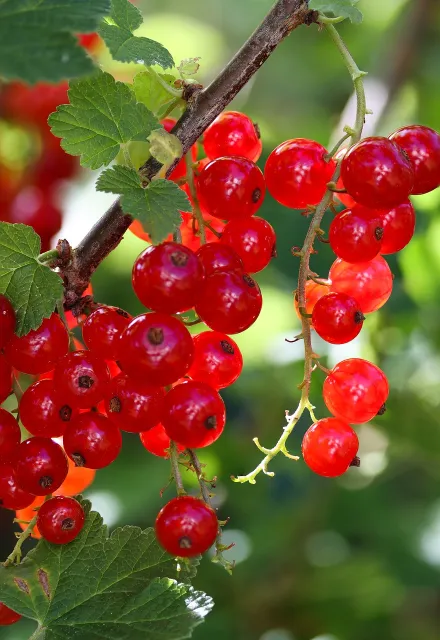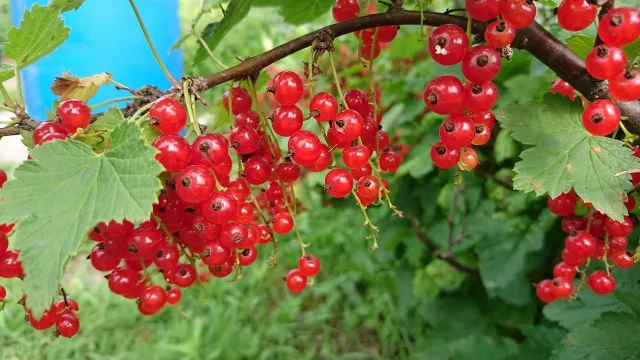Red currants
Red currants, known scientifically as Ribes rubrum, are small, tart berries that some of our members love to grow! They are not to everyone’s liking, as they are not the sweetest fruit in taste, however the health benefits are endless. Throughout history, red currants have been celebrated for their culinary versatility, medicinal properties, and nutritional benefits. From ancient civilizations to modern times, these berries have left their mark on various cultures and cuisines, continuing to be enjoyed and cherished by many.
The history of red currants dates back centuries, and these small, tart berries have a rich and fascinating background.
Ancient Origins: Red currants are native to parts of Europe, including regions such as Scandinavia, Russia, and the Baltic states. They were likely first discovered and consumed by ancient civilizations in these areas. Wild varieties of red currants have been found growing in forests and mountainous regions.
Cultivation in Ancient Times: The cultivation of red currants began in ancient Rome, where they were valued for their medicinal properties. The Romans were known to grow and consume red currants, as well as use them in various remedies and herbal preparations.

Medieval Europe: Red currants gained popularity in medieval Europe, particularly in monastic gardens. Monks cultivated red currant plants and used the berries for medicinal purposes, as well as in cooking and winemaking. Red currants were valued for their high vitamin C content, which helped prevent scurvy among sailors during long voyages
Culinary and Medicinal Uses: Red currants have a long history of being used in culinary creations. They were commonly incorporated into sweet and savory dishes, such as pies, tarts, sauces, and jellies. Red currant jelly, in particular, became a staple in British cuisine, often served alongside roasted meats. Medicinally, red currants were believed to have diuretic, digestive, and fever-reducing properties.

Spread to North America: Red currants were introduced to North America by European settlers. The berries were cultivated in colonial gardens, and their popularity grew over time. Red currant bushes were particularly cherished for their hardiness and ability to withstand various climates and growing conditions.
Modern Cultivation: Today, red currants are commercially cultivated in many parts of the world, including Europe, North America, and Asia. They are prized for their tart flavor and nutritional value, becoming a popular ingredient in jams, jellies, desserts, and beverages.
Health benefits associated with red currants:
- High in nutrients: Red currants are rich in essential nutrients such as vitamin C, vitamin K, potassium, and dietary fiber. Vitamin C is an antioxidant that supports immune function and helps in collagen production. Vitamin K is important for blood clotting and bone health, while potassium is essential for heart function and maintaining healthy blood pressure.
Antioxidant properties: Red currants are a good source of antioxidants, including anthocyanins, flavonols, and vitamin C. These antioxidants help neutralize harmful free radicals in the body, reducing oxidative stress and lowering the risk of chronic diseases such as heart disease and certain cancers.
Anti-inflammatory effects: The antioxidants found in red currants may also possess anti-inflammatory properties. Chronic inflammation is linked to various diseases, including cardiovascular diseases, diabetes, and arthritis. Consuming foods rich in antioxidants, like red currants, may help reduce inflammation in the body.
Support for eye health: Red currants contain compounds such as zeaxanthin and lutein, which are beneficial for eye health. These antioxidants help protect the eyes from oxidative damage caused by factors like UV radiation and aging, potentially reducing the risk of age-related macular degeneration and cataracts.
Digestive health: Red currants are a good source of dietary fiber, which aids in digestion and helps prevent constipation. Adequate fiber intake is also associated with a reduced risk of conditions like heart disease, obesity, and type 2 diabetes.
Hydration and weight management: Red currants have a high water content, making them hydrating and beneficial for maintaining proper hydration levels. Additionally, they are relatively low in calories and fat, which can be helpful for individuals aiming to manage their weight.
It’s worth noting that these health benefits are generally associated with consuming red currants as part of a balanced diet, rather than relying solely on one specific food for health improvements.